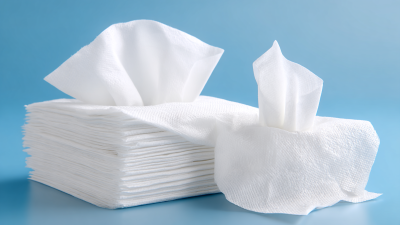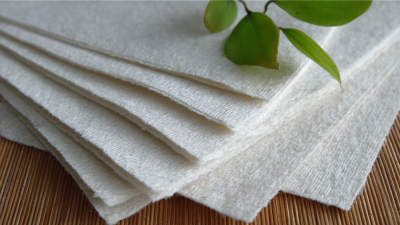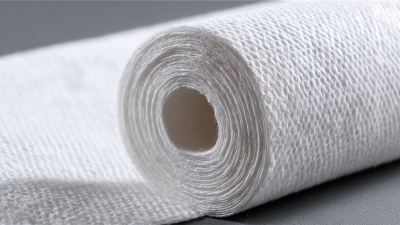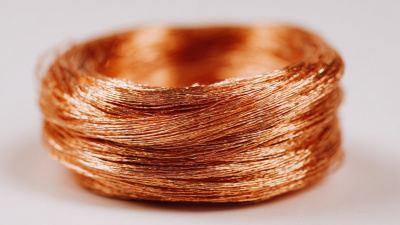Revolutionize Your Wardrobe with Conductive Yarn: The Future of Smart Textiles
Table of Contents
- Transforming Fashion: The Benefits of Conductive Yarn in Smart Textiles
- Innovative Applications: How Conductive Yarn is Shaping Wearable Technology
- Sustainability Meets Style: Eco-friendly Aspects of Conductive Yarn Fabrics
- The Intersection of Fashion and Function: Practical Uses of Smart Fabrics
- Future Trends: What to Expect from Conductive Yarn in the Fashion Industry
- Consumer Perspective: Embracing Smart Textiles in Everyday Wear
- FAQS
- Conclusion
- Related Posts
In an era where technology seamlessly intertwines with fashion, "Conductive Yarn" emerges as a game-changer in the realm of smart textiles. As consumers increasingly seek innovative clothing solutions that enhance daily convenience and functionality, Shijiazhuang Shielday Technology Co., Ltd. stands at the forefront of this revolution. Known for their advanced manufacturing capabilities in high-performance EMI shielding textiles and conductive wires, Shielday Technology offers a diverse portfolio of specialty products that marry style with cutting-edge technology. By harnessing the unique properties of Conductive Yarn, the company not only paves the way for next-generation wearables but also empowers designers to reimagine wardrobes as multifunctional, interactive pieces. This exploration into the future of fashion not only highlights the capabilities of conductive materials but also underscores Shielday's commitment to comprehensive custom product development that meets the evolving needs of modern consumers.

Transforming Fashion: The Benefits of Conductive Yarn in Smart Textiles
Conductive yarn is poised to fundamentally transform the fashion industry, offering a myriad of benefits that enhance the functionality of smart textiles. With the integration of technologies such as sensors and flexible electronics, garments made with conductive materials are becoming capable of monitoring health metrics, thereby paving the way for healthier lifestyles. A recent report on smart fabrics predicts that by 2025, the market for health-monitoring textiles will dominate with innovations that enable everyday clothing to track vital signs and provide real-time health data. This shift not only makes clothing smarter but also enhances consumer engagement with their health.
Moreover, the trend of merging fashion and technology through smart textiles emphasizes sustainability. The development of e-textiles, which can self-clean or adapt to environmental conditions, contributes significantly to reducing the environmental footprint of the textile industry. Reports indicate that innovations like conductive threads and thermoelectric fabrics are becoming crucial in sectors such as healthcare, sports, and defense. These advancements represent a leap toward the circular economy, where textiles are designed for durability and recyclability, ensuring a sustainable future for the fashion world. As consumer demand for multifunctional and sustainable products grows, the exploration of conductive yarn in smart textiles will undoubtedly shape the future of fashion.
Revolutionizing Wardrobe: Benefits of Conductive Yarn in Smart Textiles
Innovative Applications: How Conductive Yarn is Shaping Wearable Technology
Conductive yarn is at the forefront of innovation in wearable technology, bringing transformative applications to various fields including healthcare and communication. With advancements in smart textile systems, wearable devices can now monitor the emotional well-being of older adults, addressing issues like loneliness. By integrating sensors into clothing, these smart textiles collect behavioral data, allowing caregivers to respond proactively and enhancing the quality of life for users.

Moreover, the emergence of highly conductive materials has opened new pathways for energy generation and sensing capabilities in textiles. Recent innovations include electronic yarns that convert body heat into electricity, creating self-sustaining garments that power wearable devices. As engineers and designers continue to explore the integration of conductive yarn in their creations, the potential for smart textiles will only expand, promising a future where clothing not only serves as a fashion statement but also plays a crucial role in health monitoring and energy management.
Sustainability Meets Style: Eco-friendly Aspects of Conductive Yarn Fabrics
Conductive yarns are at the forefront of a fashion revolution, merging technological innovation with eco-friendliness. As consumers become increasingly aware of their environmental footprint, sustainable materials are gaining traction in the textile industry. Conductive yarns offer a unique solution by integrating electronic functionality into fabrics while being produced from eco-conscious materials. This combination not only enhances the wearer's experience but significantly reduces environmental impact.
When choosing conductive yarns, consider these tips: first, prioritize materials made from recycled fibers or organic sources to ensure sustainability. Secondly, opt for manufacturers like Shijiazhuang Shielday Technology Co., Ltd., which specializes in high-performance EMI shielding textiles that meet eco-friendly standards. Finally, explore the possibilities of custom product development that blends style with functionality, allowing you to craft a wardrobe that reflects your personal taste while embracing cutting-edge technology.
Incorporating these conductive materials into your wardrobe means embracing a stylish, smart, and sustainable future. As more brands adopt these innovative practices, the potential for a new era in fashion that honors both design and the environment continues to expand.
Revolutionize Your Wardrobe with Conductive Yarn: The Future of Smart Textiles - Sustainability Meets Style: Eco-friendly Aspects of Conductive Yarn Fabrics
| Aspect | Details | Benefits |
|---|---|---|
| Material Composition | Typically blends of cotton, polyester, and conductive fibers | Provides comfort and conductivity |
| Sustainability | Manufactured using eco-friendly processes with low environmental impact | Reduces carbon footprint and promotes sustainable fashion |
| Functionality | Capable of conducting electricity for various smart applications | Enables integration with wearable technology |
| Durability | Resistant to wear and tear compared to traditional fabrics | Longer lifespan of garments, reducing waste |
| Style Versatility | Available in various designs and patterns | Maintains aesthetic appeal while offering functionality |
The Intersection of Fashion and Function: Practical Uses of Smart Fabrics
Smart textiles are redefining the way we think about clothing, marrying aesthetics with advanced functionality. According to a report by Grand View Research, the global smart textiles market was valued at approximately $1.25 billion in 2020 and is projected to grow at a compound annual growth rate (CAGR) of 27.4% from 2021 to 2028. This surge is driven by innovations in conductive yarns that enable garments to monitor health metrics, regulate temperature, and even connect to smart devices.
One notable application of smart fabrics is in sportswear. Athletes benefit significantly from garments embedded with conductive yarns that can collect data on heart rate, muscle activity, and body temperature in real-time. A study published in the Journal of Textile Science and Technology found that wearers of smart sports textiles experienced an improvement of up to 20% in performance tracking accuracy, leading to better training outcomes. Furthermore, smart textiles are being utilized in medical settings, where they can serve as wearable sensors for continuous monitoring of patients, demonstrating the vast potential for enhancing everyday wear through technological integration.
Future Trends: What to Expect from Conductive Yarn in the Fashion Industry
The integration of conductive yarn in the fashion industry represents a significant leap towards smart textiles, with potential applications that extend far beyond aesthetics. According to a recent report from the Smart Textile Industry Association, the global market for smart textiles is projected to reach $4 billion by 2026, growing at a CAGR of 27.4% from 2021. This rapid growth is driven by innovations in wearable technology, where conductive yarn can facilitate the seamless interaction between clothing and electronic devices, transforming everyday wear into a hub of connectivity.
Future trends indicate that as the technology behind conductive yarn evolves, we can expect a surge in versatile applications within garments. Industry leaders predict that by 2025, nearly 30% of sportswear will incorporate these advanced materials to track performance metrics in real-time. This shift not only enhances functionality but also opens doors for fashion designers to reimagine the user experience, merging style with high-tech solutions. Fashion enthusiasts can look forward to garments that not only look good but also provide health monitoring, temperature regulation, and even customizable designs tailored to the individual's needs.
Consumer Perspective: Embracing Smart Textiles in Everyday Wear
As consumers increasingly seek innovative solutions to blend technology with everyday life, smart textiles made from conductive yarn are gaining traction in fashion. These fabrics, capable of integrating digital functionalities, offer wearers an unprecedented level of convenience and connectivity. Imagine clothing that not only keeps you comfortable but also tracks your fitness, adjusts to your body temperature, or even communicates with your devices. This paradigm shift allows individuals to embrace a lifestyle where clothing enhances their daily activities rather than merely serving aesthetic purposes.

Moreover, the appeal of smart textiles extends beyond mere functionality. Consumers are drawn to the novelty and futuristic aspects of these garments. With an increasing number of brands entering the market, ranging from high fashion to athleisure, the options for stylish yet functional apparel are expanding. Shoppers are excited to invest in pieces that reflect their tech-savvy nature while providing practical benefits. As the fashion industry continues to evolve, it is clear that the integration of conductive yarn into everyday wear is not just a fleeting trend; it represents a significant step towards a more interconnected future.
FAQS
: Conductive yarn is a type of fiber that integrates electric conductivity into textiles, enabling garments to monitor health metrics and enhance functionality through the use of sensors and flexible electronics.
By 2025, the market for health-monitoring textiles made possible by innovations in smart fabrics is predicted to dominate, allowing everyday clothing to track vital signs and provide real-time health data.
Conductive yarns contribute to sustainability by enabling the development of e-textiles that can self-clean or adapt to environmental conditions, significantly reducing the textile industry's environmental footprint.
Innovations in conductive yarn are becoming crucial in sectors like healthcare, sports, and defense, highlighting their versatility and functional applications.
Smart textiles integrated with sensors can monitor the emotional well-being of older adults, allowing caregivers to respond proactively to issues like loneliness, thus enhancing the quality of life.
Recent innovations include electronic yarns that can convert body heat into electricity, enabling the creation of self-sustaining garments that can power wearable devices.
The global smart textiles market is projected to grow at a compound annual growth rate (CAGR) of 27.4% from 2021 to 2028, indicating significant advancements driven by conductive yarn technologies.
Athletes benefit from smart fabrics embedded with conductive yarns that collect data on heart rate, muscle activity, and body temperature in real-time, enhancing performance tracking accuracy.
Smart textiles are being utilized in medical settings as wearable sensors for continuous patient monitoring, demonstrating their vast potential in enhancing everyday wear through technology.
As consumer demand for multifunctional and sustainable products grows, the exploration and application of conductive yarn in smart textiles are expected to shape the future of fashion significantly.
Conclusion
In the evolving landscape of fashion, Conductive Yarn stands out as a transformative element in the realm of smart textiles. By integrating this innovative material, designers can create garments that not only enhance wearer comfort but also incorporate advanced technology for functionalities such as health monitoring and connectivity. The myriad benefits of Conductive Yarn, from its flexibility to its conductive properties, enable the development of cutting-edge wearable technology that seamlessly blends style and utility.
Moreover, the eco-friendly aspects of Conductive Yarn align with contemporary sustainability goals, allowing brands to offer stylish yet responsible fashion choices. As consumer interest in smart textiles grows, the future of Conductive Yarn in the fashion industry looks promising, with potential applications expanding far beyond traditional boundaries. Companies like Shijiazhuang Shielday Technology Co., Ltd. are at the forefront, providing high-performance conductive wires and textiles, paving the way for innovative and functional fashion that meets the demands of modern consumers.
Related Posts
-

10 Industry Standards for Best Fire Resistant Fabric and 7 Reasons to Choose Them
-

Common Issues with Wet Wipes Nonwoven Fabric You Need to Know
-

Essential Checklist for Sourcing Bamboo Fiber Nonwoven Fabric: Key Factors to Consider
-

How to Choose the Right Antibacterial Sock for Ultimate Comfort and Protection
-

Mastering Ef Nonwoven Fabric Techniques for Innovative Applications
-

Understanding the Challenges with Sourcing Quality Copper Tinsel Wire

